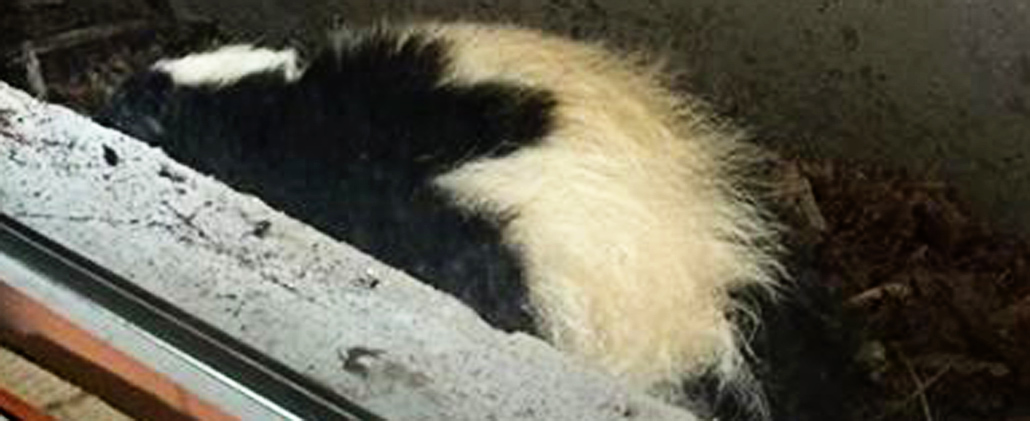- USA Wildlife Removal Education Guide - Where do Skunks Live?
Where do Skunks Live?

Skunks adapt to a variety of living conditions. In the wild they favor woods, grasslands, brush and open prairies – in short, just about any place that offers a food supply and is within a couple of miles of a water source. Wild habitat tends to provide the animals with a rich diet that consists of insects, grubs, earthworms, small rodents, snakes, lizards, frogs, mushrooms, berries and fruit.
Typically, a skunk will dig its own den or occupy one that has been previously dug by another animal, such as a fox or groundhog, lining the burrow with grass and leaves. The animals have also been known to steal towels or blankets from homes to supplement their natural bedding. Above ground, the animals often choose hollow logs, woodpiles or thickets for nesting.
Urban-dwelling skunks are attracted by the relatively easy availability of food, water and shelter and they easily become accustomed to human presence. They favor spaces under houses or porches as well as in dark corners of garages and other buildings where they can live relatively undisturbed. Nocturnal by nature, their presence normally is detected by smell rather than sight. And often, they exist close to humans, such as in a crawl space, without ever being detected.
Skunks don’t actually hibernate, but they do enter a state of torpor during the cold weather months, occasionally waking and exiting the burrow to forage and returning to resume their resting state. Several female skunks may cluster in a communal den for mutual warmth during the cold winter months, occasionally also allowing a male to join them.
Generally speaking, skunks are solitary animals, mating in late winter or early spring and bearing litters of from two- to 10 kits after a 64-day gestation period. Six babies is the average litter size, with the kits born blind and virtually hairless. Within two or three months, they have grown their characteristic coats and are virtual miniatures of their mothers. At that age they are able to leave the den and go foraging with the mother skunk and at about one year old, they ae ready to leave the family and head out on their own.
Unless they’re sick, skunks are not to be feared. If you encounter one, just keep your distance and don’t make any threatening moves and you’ll be okay.
If you need help, we service the entire USA! Click here for a wildlife removal specialist in your town!
Go back to the main Skunk Removal page for more information about Where do Skunks Live?.

